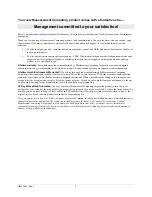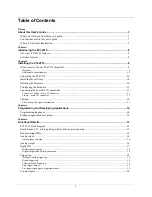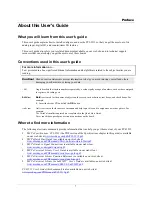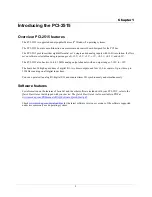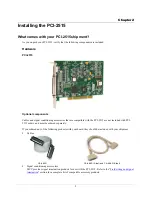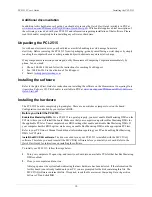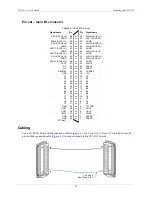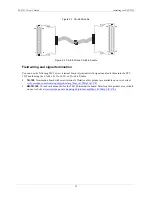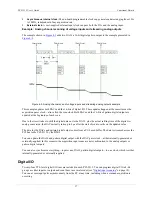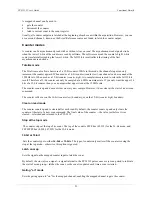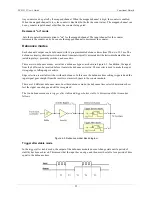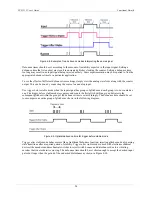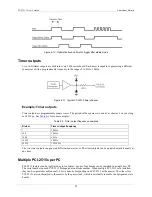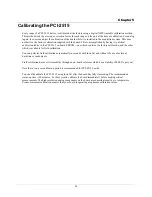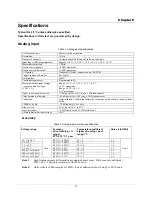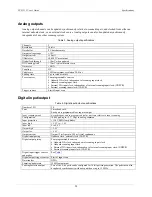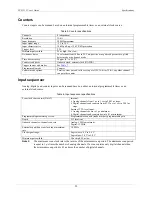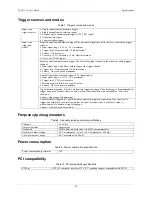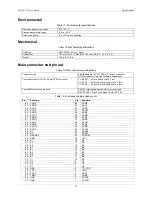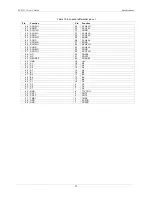
PCI-2515 User's Guide
Functional Details
17
Asynchronous internal clock
:
The on-board programmable clock can generate updates ranging from 1 Hz
to 1 MHz, independent of any acquisition rate..
External clock
.
A user-supplied external input clock can pace both the D/A and the analog input.
Example: Analog channel scanning of voltage inputs and streaming analog outputs
The example shown in
adds two DACs a 16-bit digital pattern output to the example presented in
Figure 4-3. Analog channel scan of voltage inputs and streaming analog outputs example
This example updates both DACs and the 16-bits of digital I/O. These updates happen at the same time as the
acquisition pacer clock—also called the scan clock. Both DACs and the 16-bits of pattern digital output are
updated at the beginning of each scan.
Due to the time it takes to shift the digital data out to the DACs, plus the actual settling time of the digital-to-
analog conversion, the DACs actually take up to 4 µs after the start of scan to settle on the updated value.
The data for the DACs and pattern digital output comes from a PC-based buffer. The data is streamed across the
PCI bus to the PCI-2515 by the DMA.
You can update the DACs and pattern digital output with the DAC pacer clock—either internally-generated or
externally-applied. In this scenario, the acquisition input scans are not synchronized to the analog outputs or
pattern digital outputs.
You can also synchronize everything—input scans, DACs, pattern digital outputs—to one clock, which is either
internally-generated or externally-applied.
Digital I/O
Twenty-four TTL-level digital I/O lines are included in each PCI-2515. You can program digital I/O in 8-bit
groups as either inputs or outputs and scan them in several modes (see "
You can access input ports asynchronously from the PC at any time, including when a scanned acquisition is
occurring.
Summary of Contents for PCI-2515
Page 1: ......

